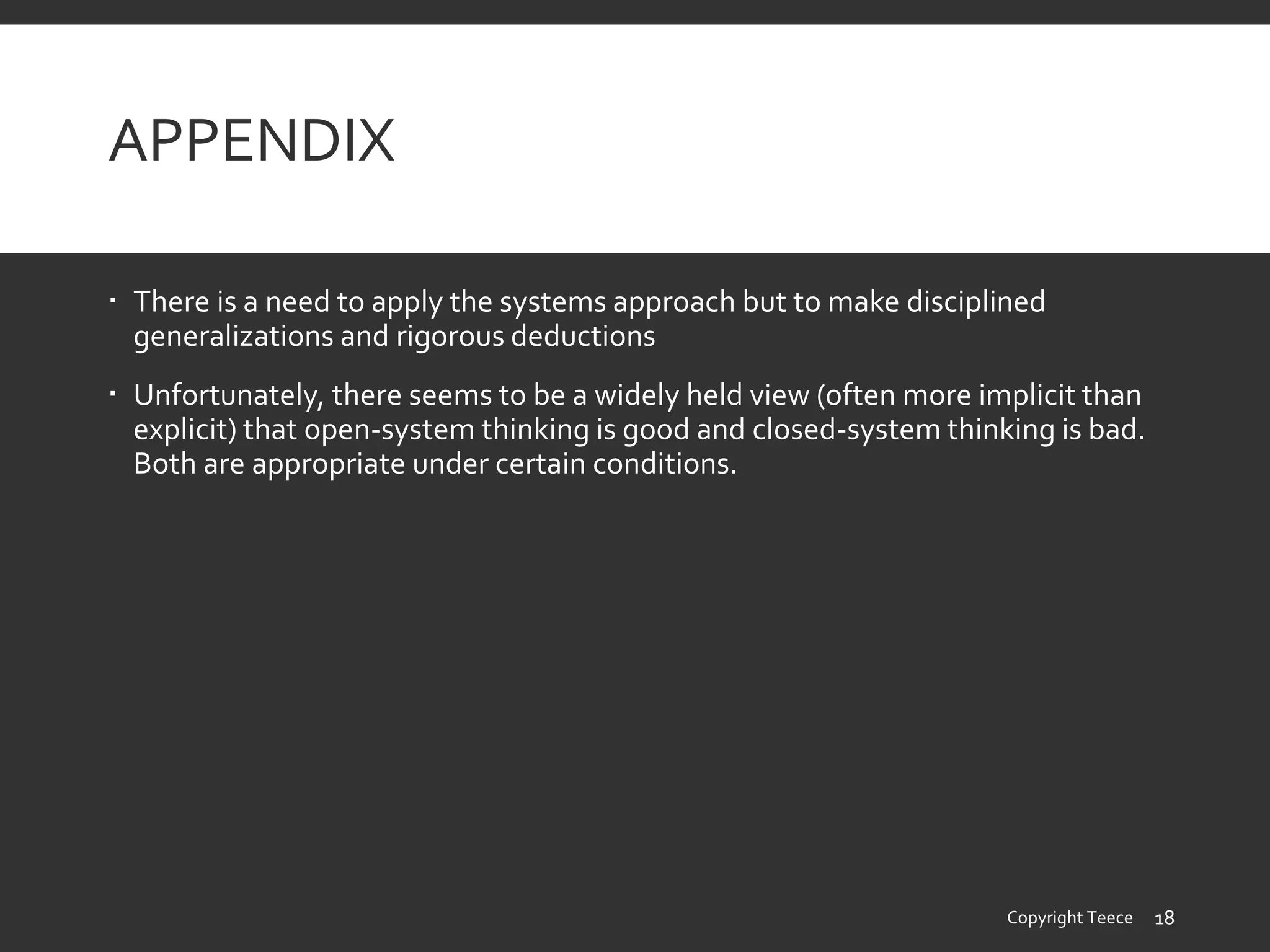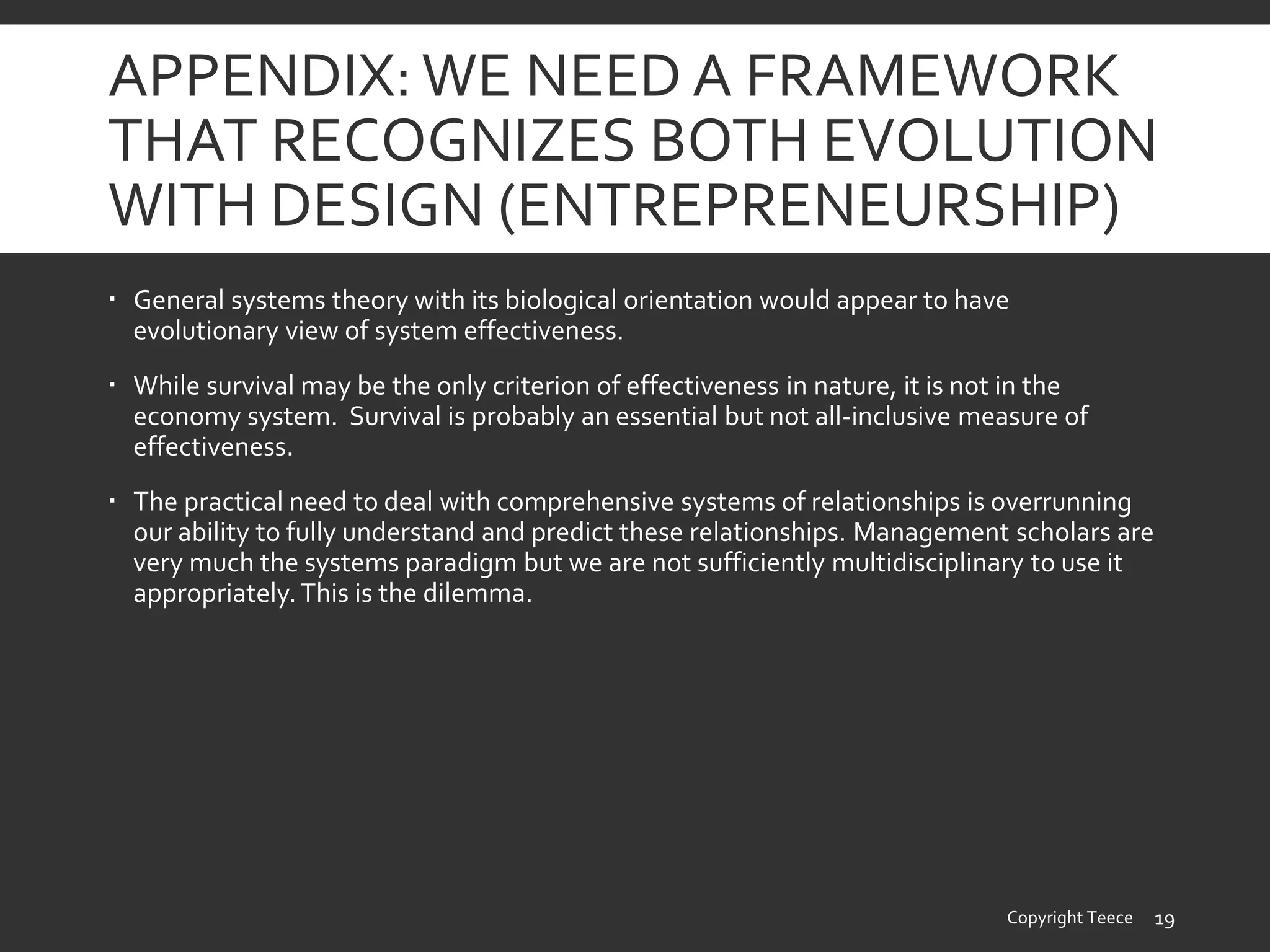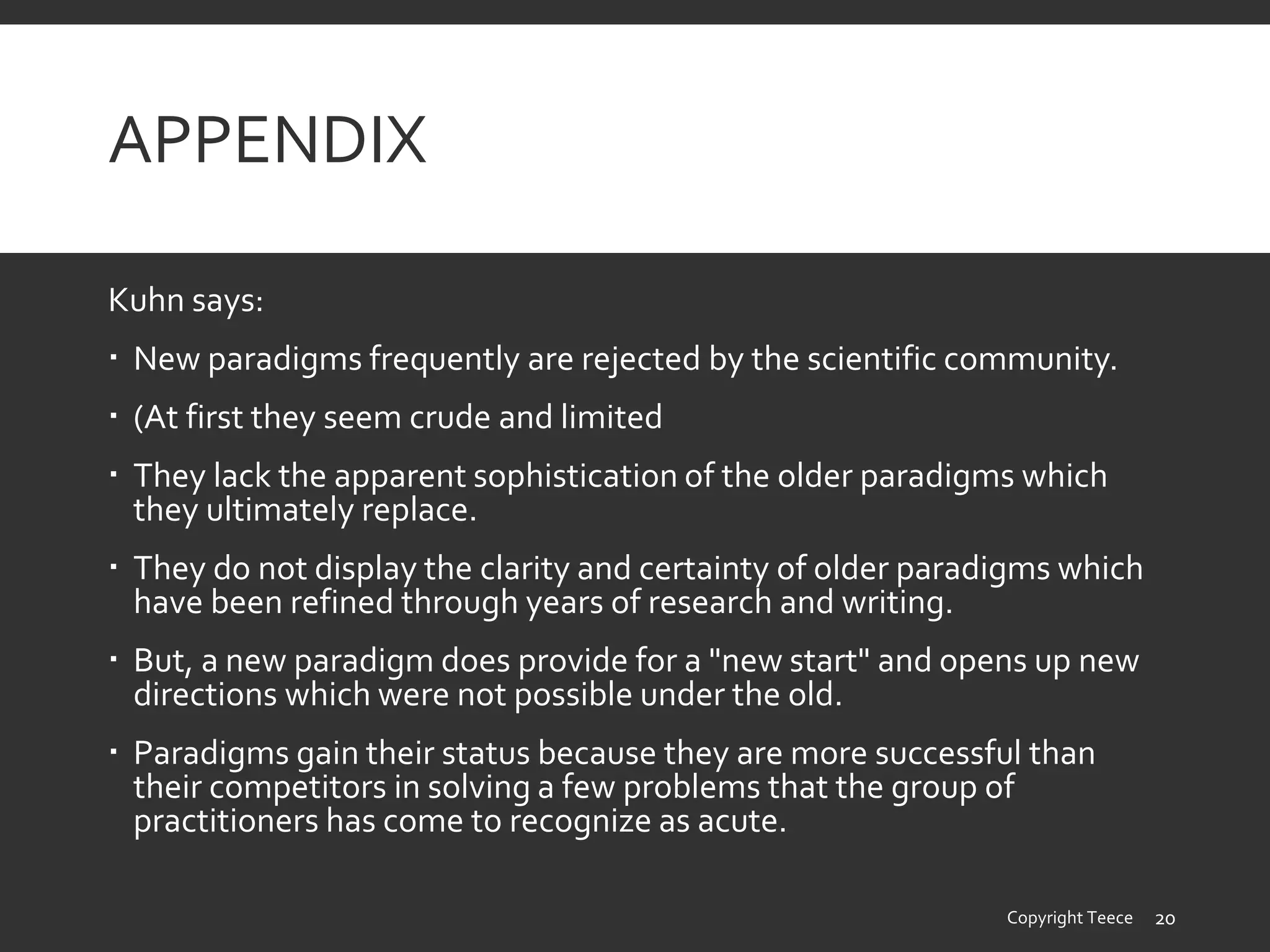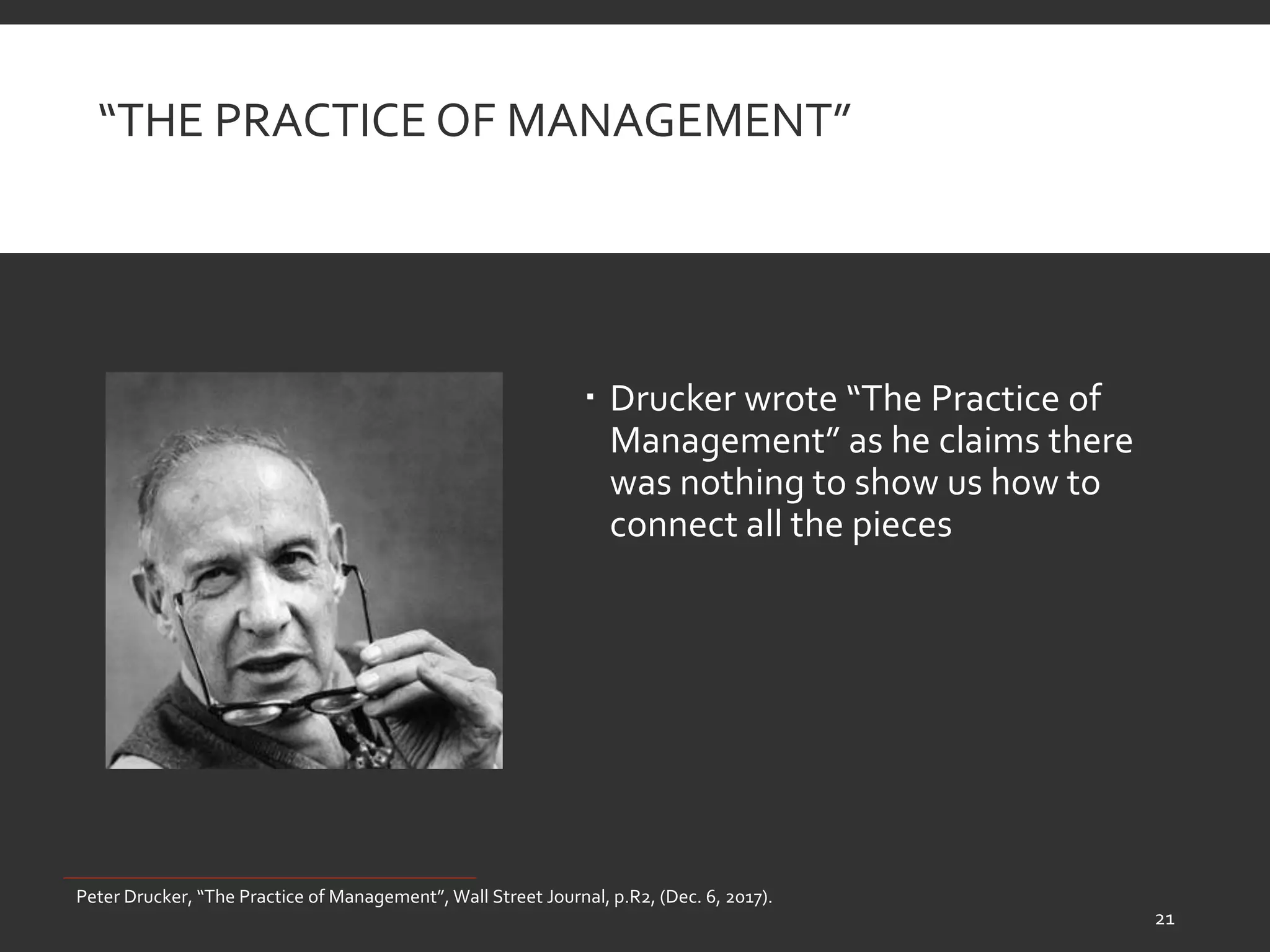The document discusses systems theory and its application to management. It provides background on systems theory and how it originated from biology and was applied to management. Some key points made include:
- Systems theory takes a holistic approach but does not entirely dismiss reductionism. It is important to understand the parts as well as the whole.
- Dynamic capabilities framework can serve as a workable systems theory for management by taking a holistic view of the enterprise and environment, understanding interdependencies, and emphasizing entrepreneurial action and transformation.
- Both systems theory and dynamic capabilities are difficult to apply given deep specialization in education and practice but provide a more comprehensive understanding of complex realities than other approaches.
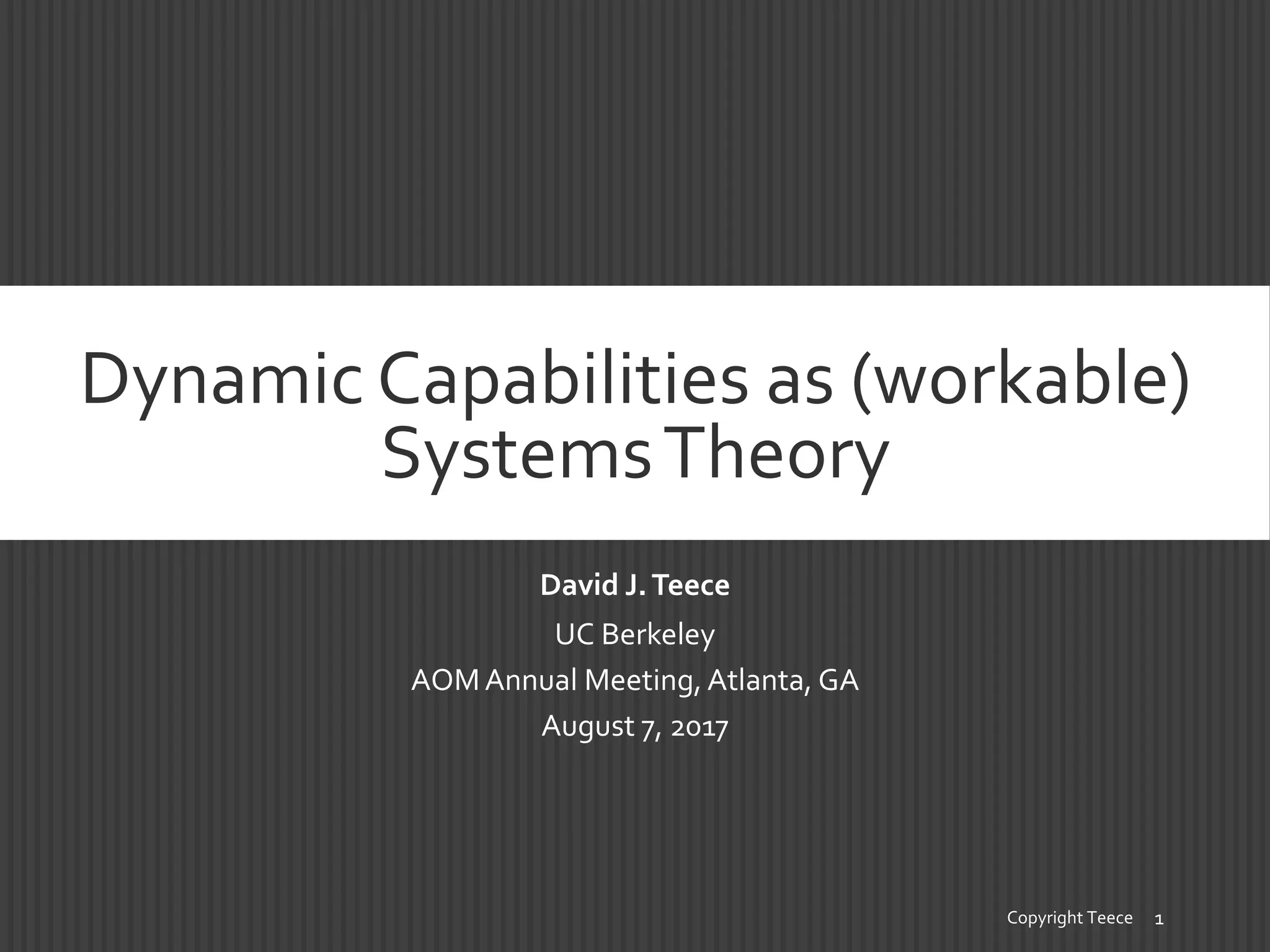

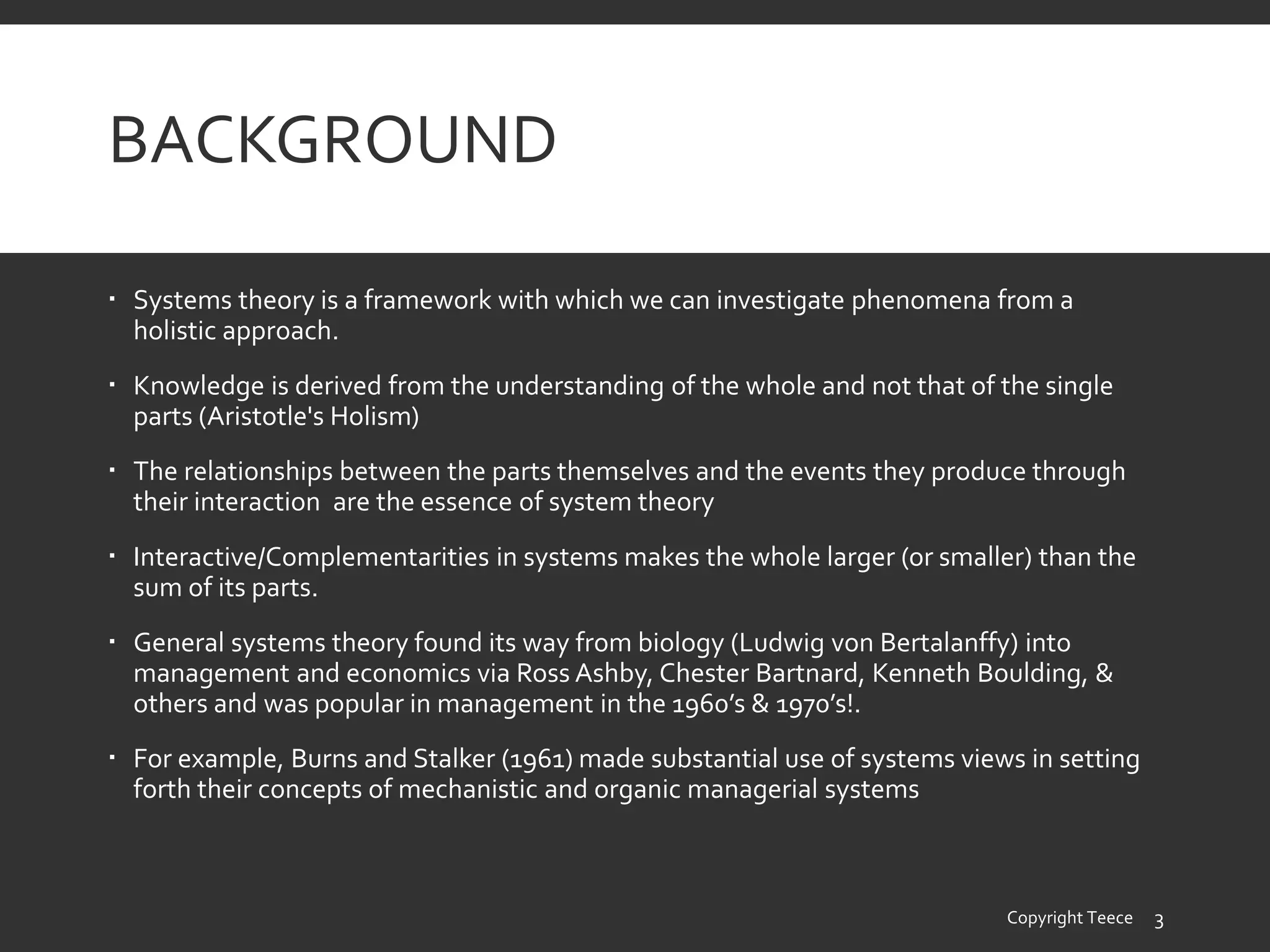
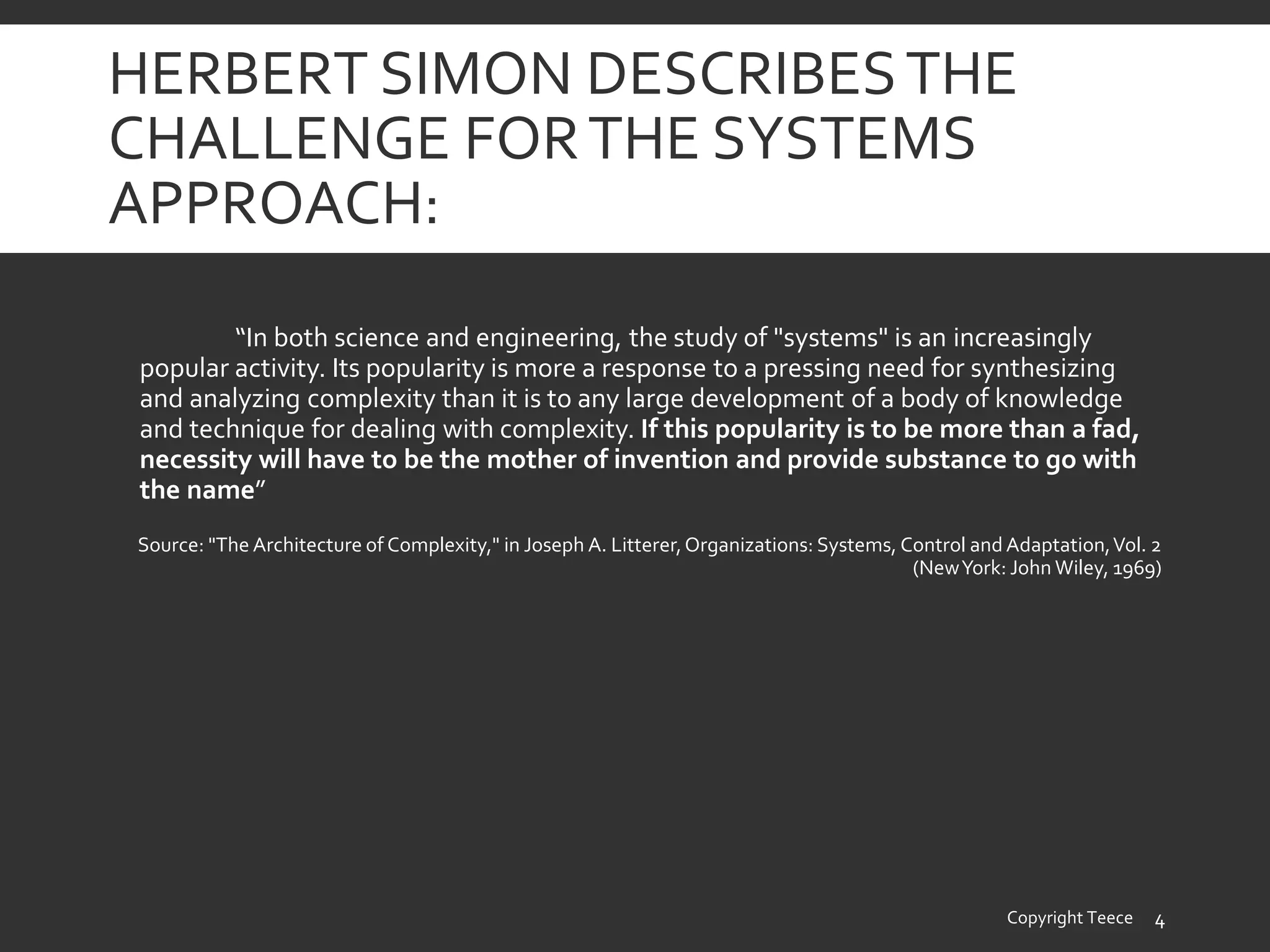
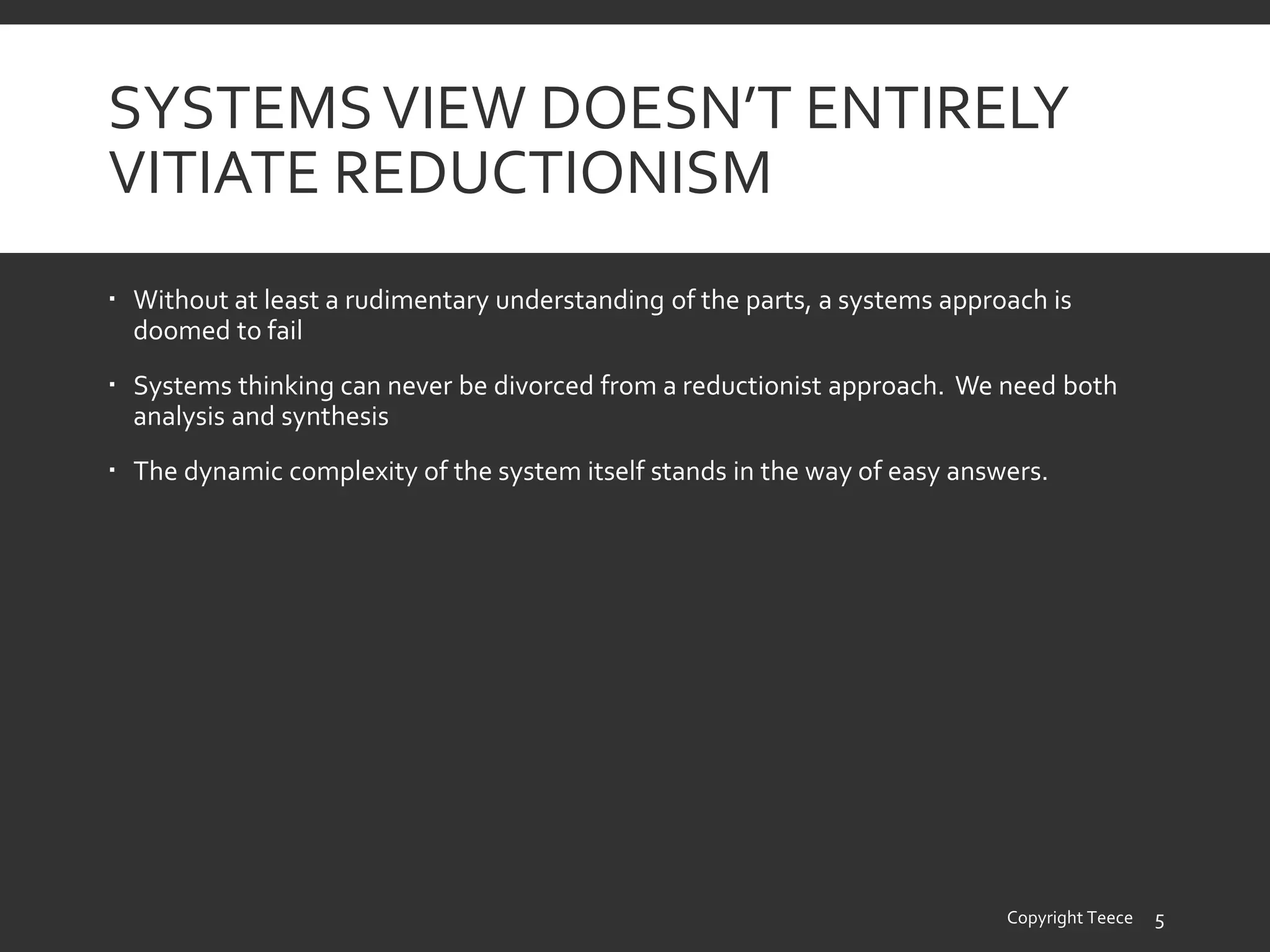
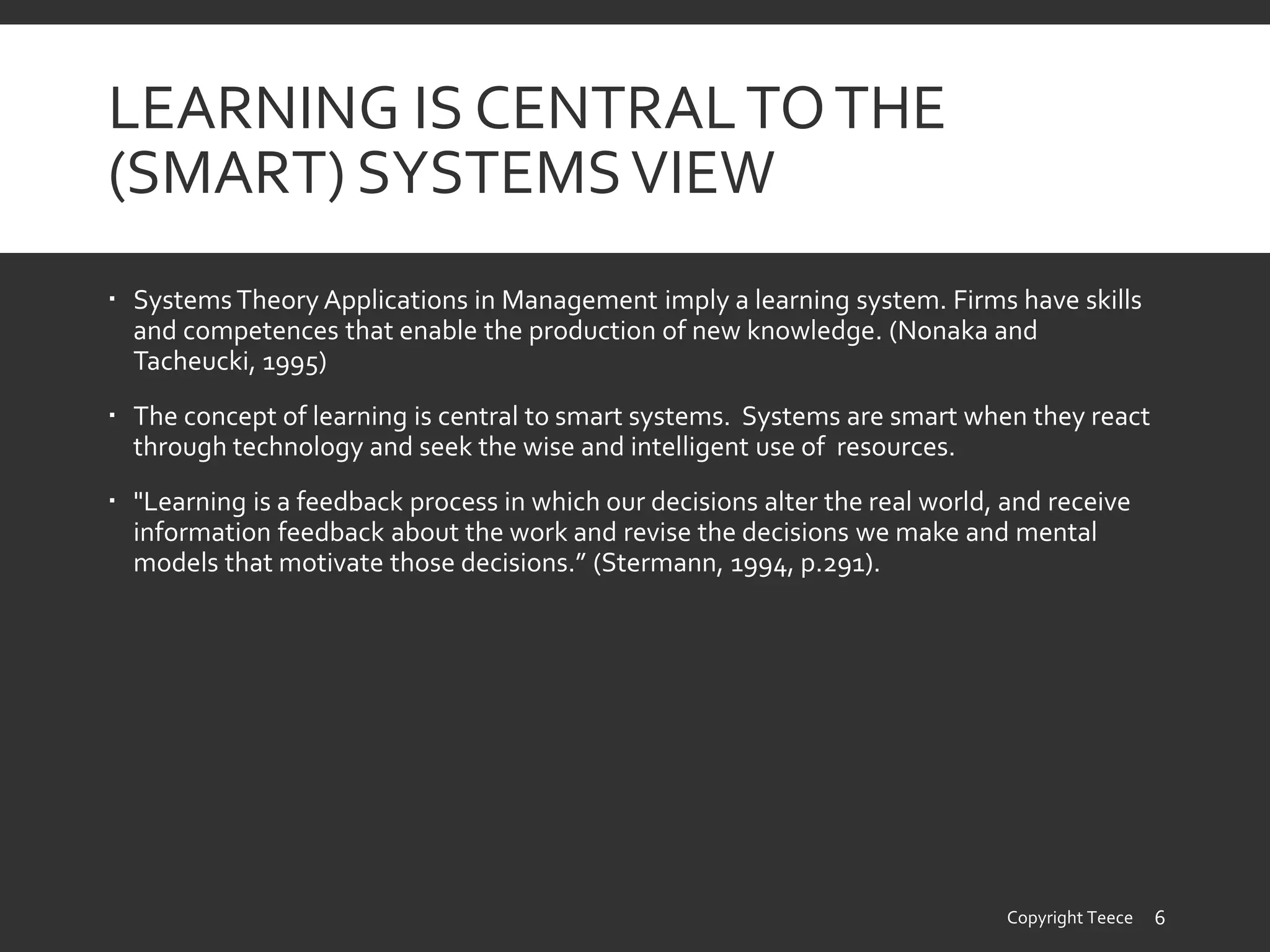
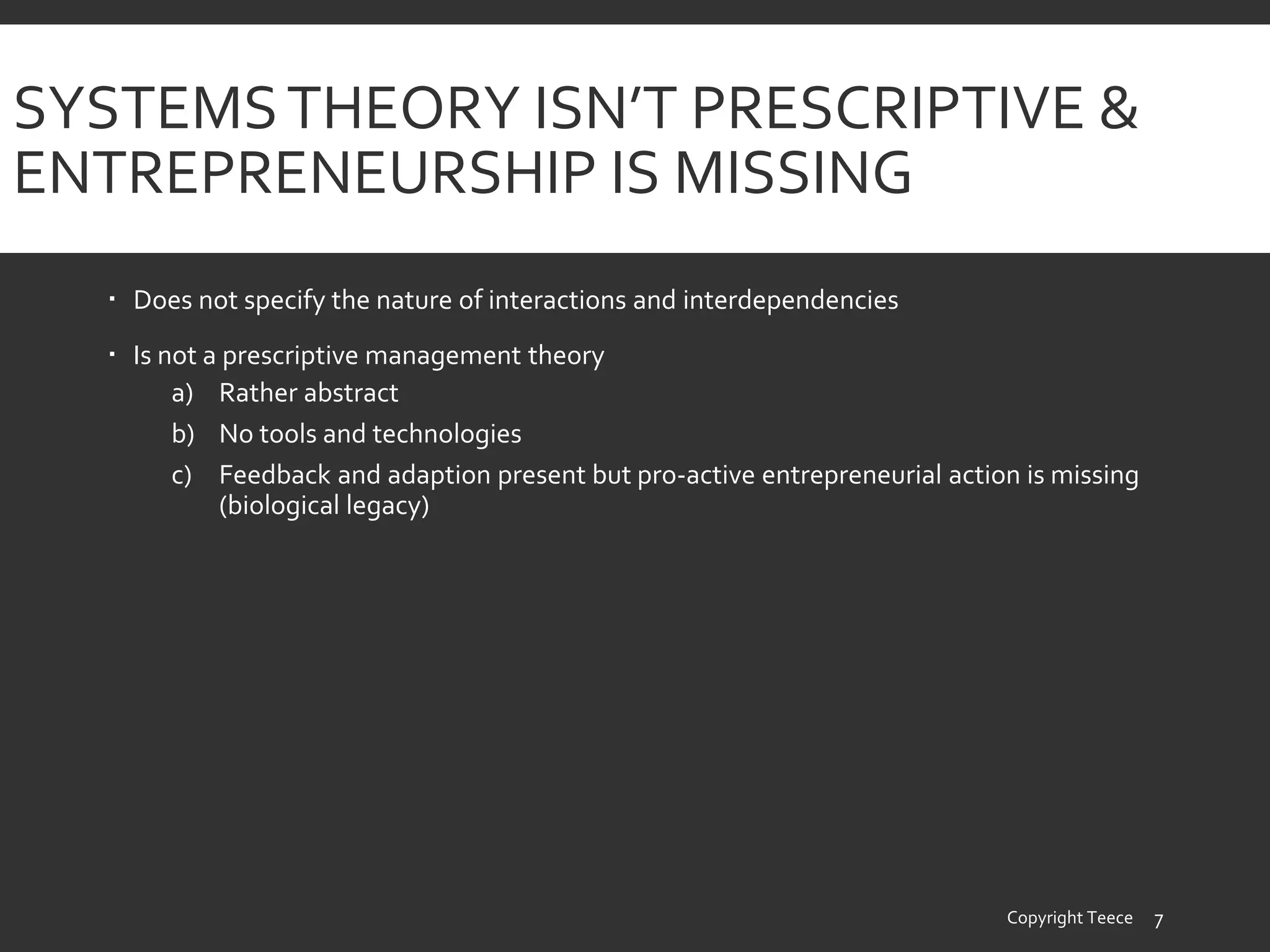

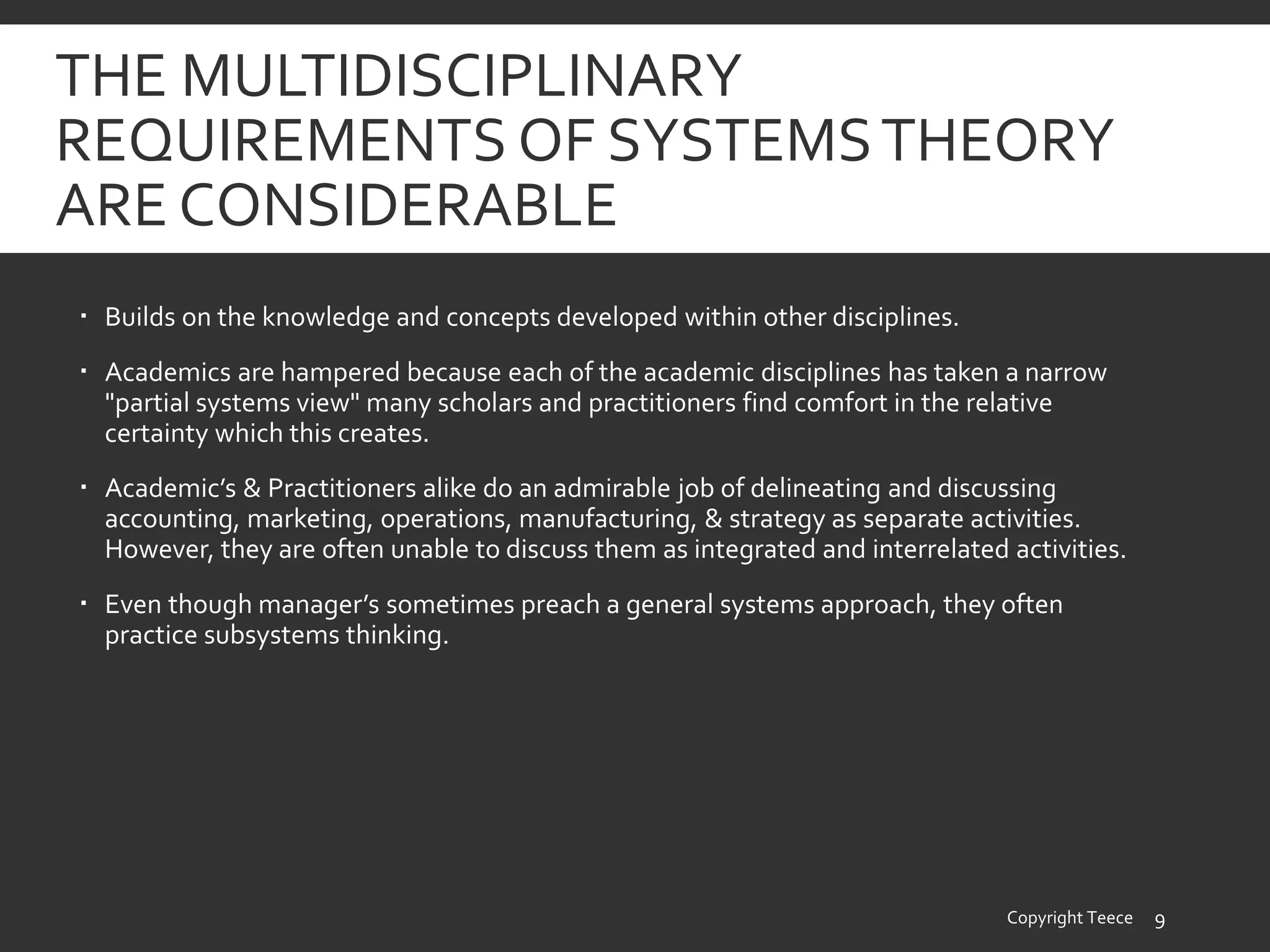
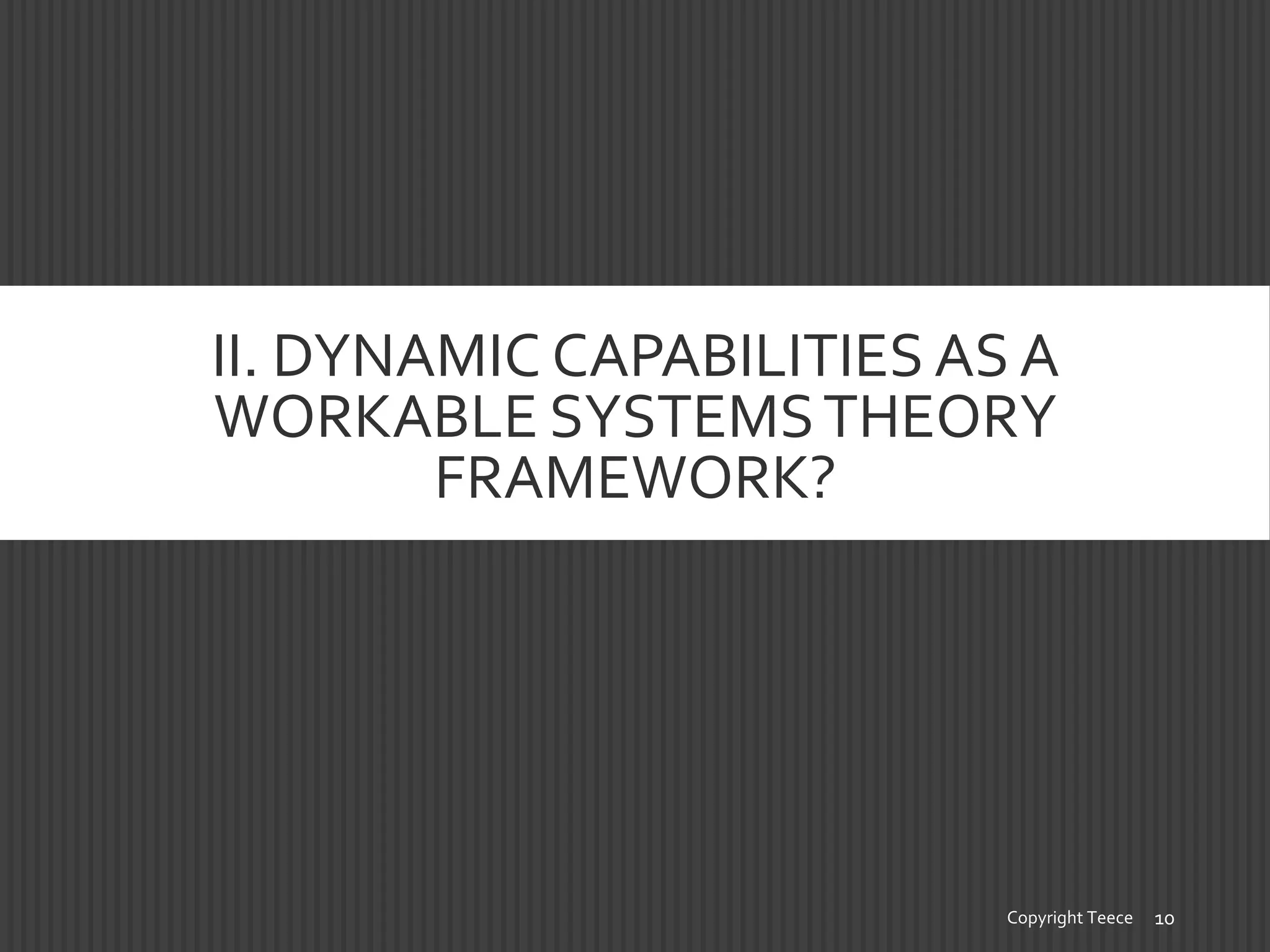


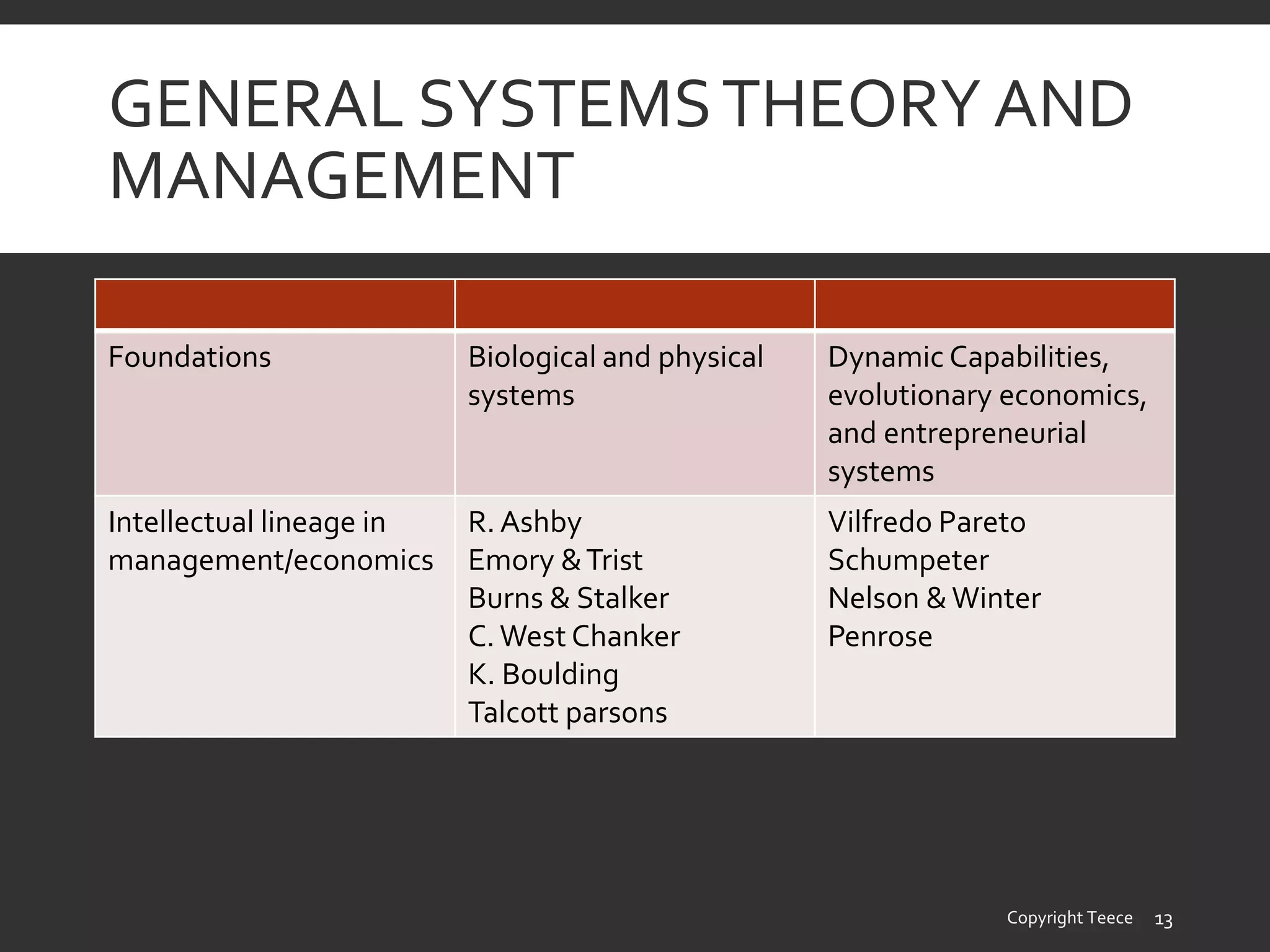
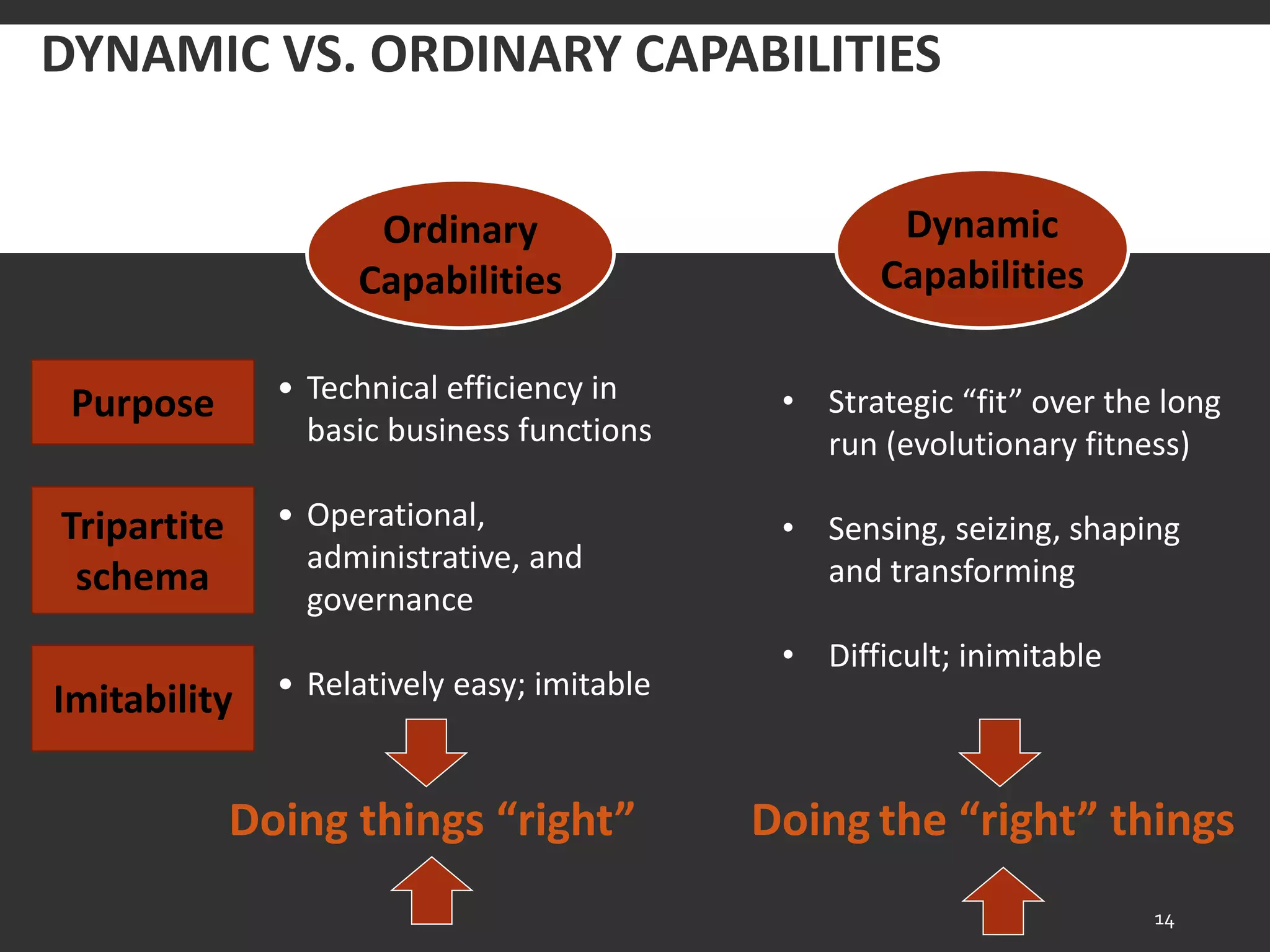
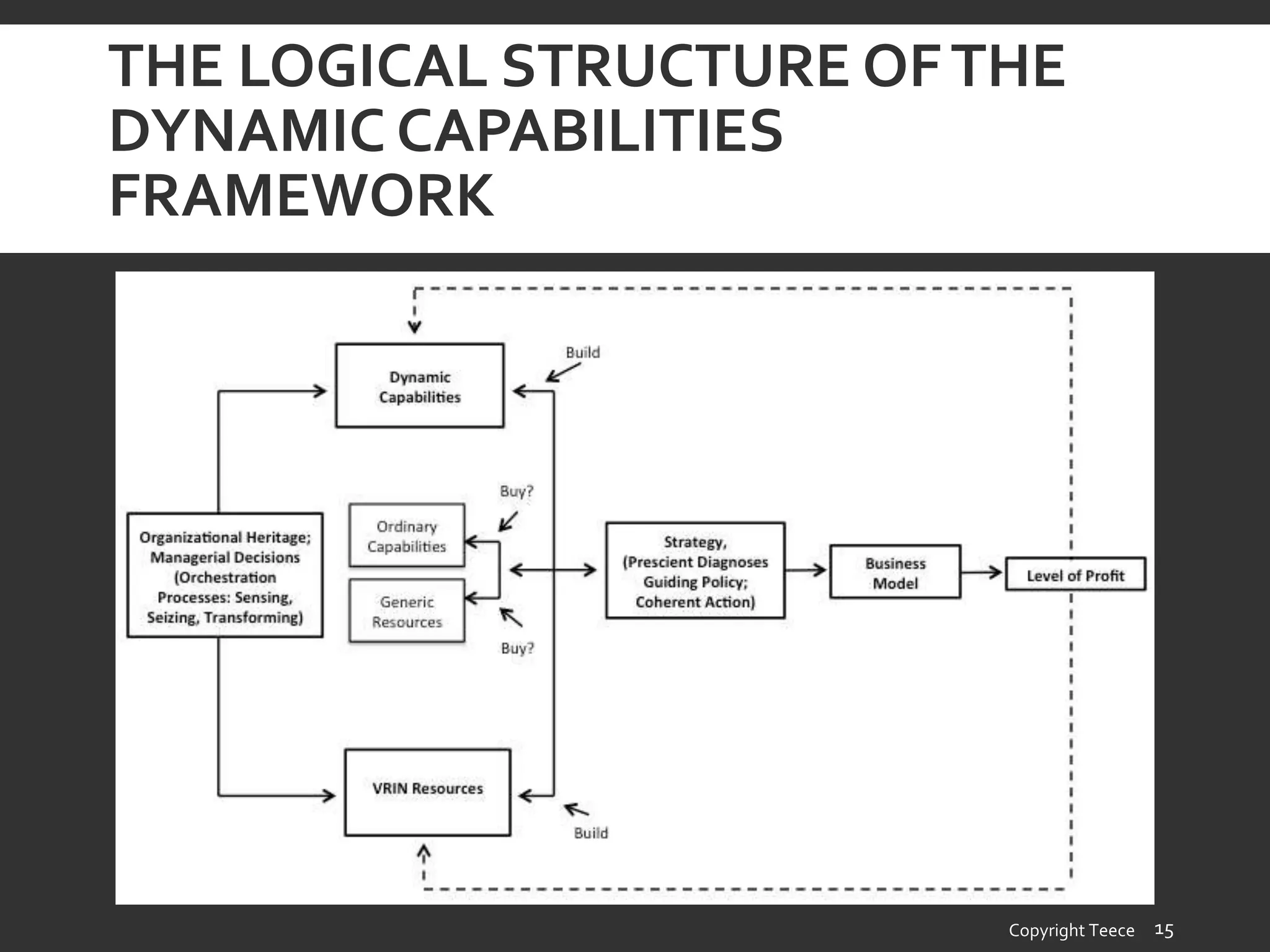
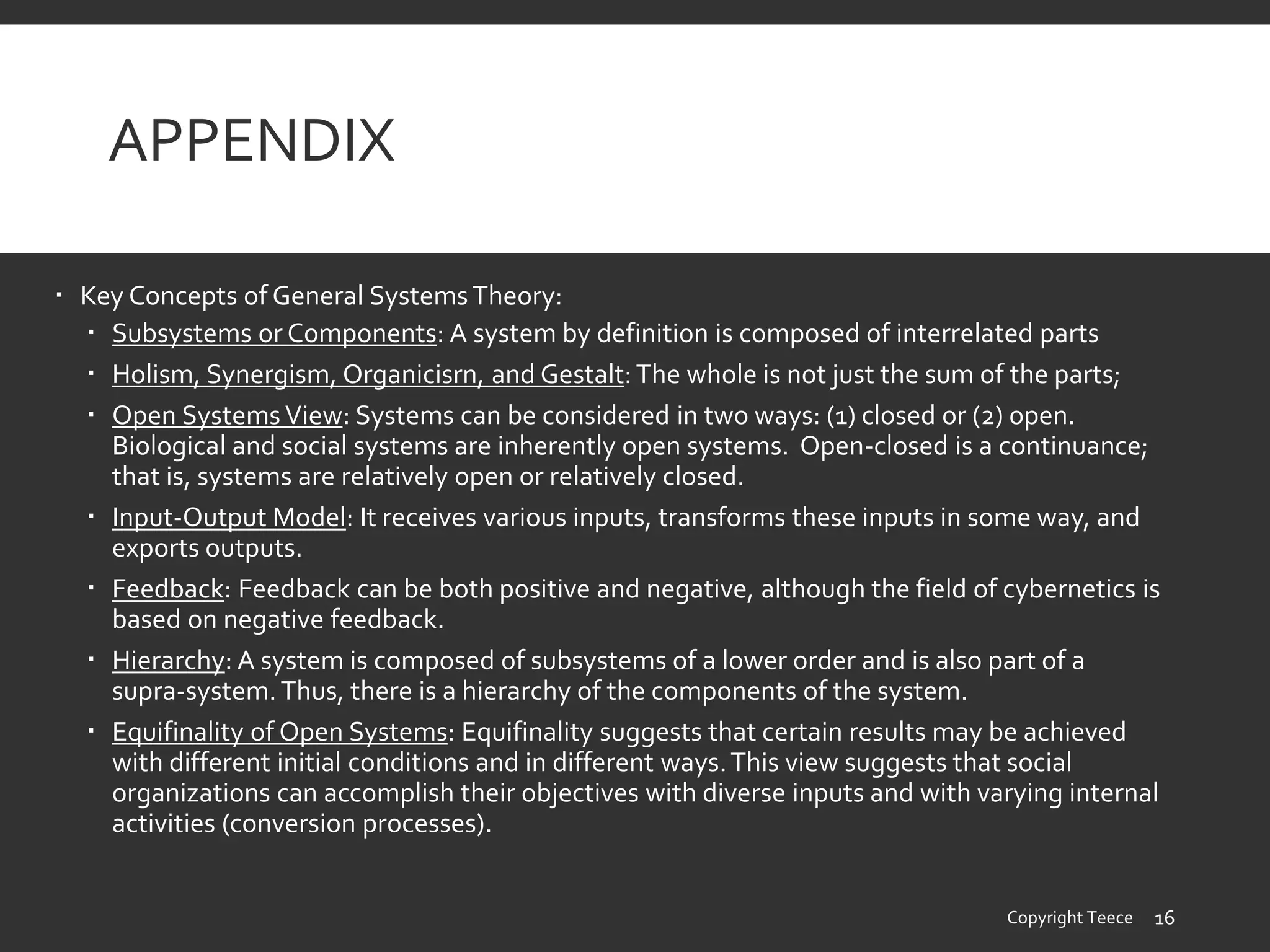
![APPENDIX:WHY SYSTEMSTHEORY
DOESN’T INFORM MANAGEMENT
Social organizations do not occur naturally in nature; they are contrived by man.
General SystemsTheory would have us accept this sanalogy berween organism and
social organization.Yet, we have a hard time swallowing it whole. Katz and Kahn warn
us of the danger-
There has been no more pervasive, persistent, and futile fallacy handicapping the social
sciences than the use of the physical model for the understanding of social structures.
The biological metaphor, with its crude comparisons of the physical parts of the body to
the parts of the social system, has been replaced by more subtle but equally misleading
analogies between biological and social functioning. This figurative type of thinking
ignores the essential difference between the socially contrived nature of social systems
and physical structure of the machine or the human organism. So long as writers are
committed to a theoretical framework based upon the physical model, they will miss
the essential social-psychlogical facts of the highly variable, loosely articulated
character of social systems.”
[19, p. 31]
Copyright Teece 17](https://image.slidesharecdn.com/generalsystemstheoryfinal-210218215234/75/Dynamic-Capabilities-as-workable-Systems-Theory-17-2048.jpg)
